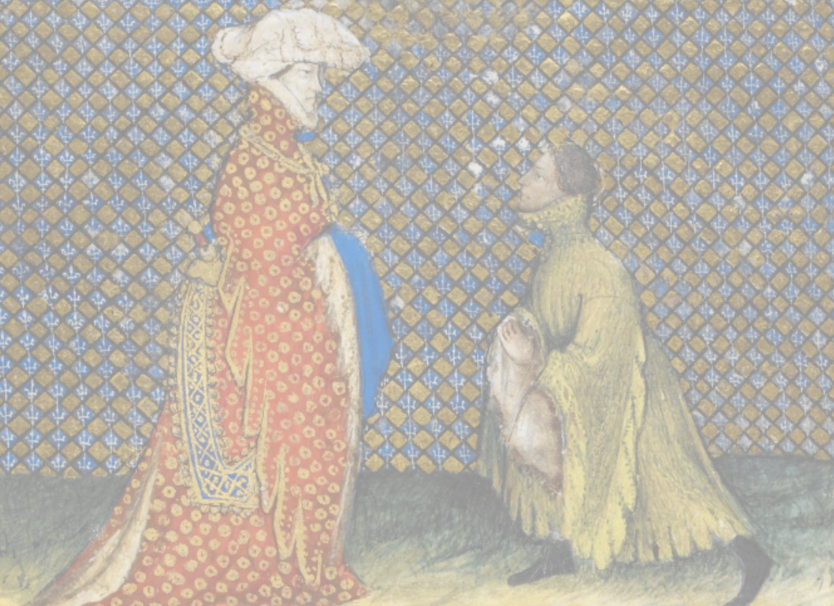I was going to a LARP set in the early 15th century and I wanted to make one item of clothing for it. The LARP did not have strict dress requirement but I wanted to make something that I could wear more than once – thus also on events with stricter rules on historical adherence.
I wanted an outer garment and I was quickly drawn to the houppelande – one of the last semi-unisex garments in medieval Europe. Men’s houppelandes at the turn of the 14th/15th century were usually fairly long and characterized by ridiculously high collars, grande sleeves and elaborate decorations such as dagging. It was an era of excitement, flamboyance and creativity.
With all the options on fabric, color, sleeve and length, I thought that the easiest approach would be to choose a manuscript template; a garment to match. As I wanted a houppelande with dagging, the choice eventually fell on a manuscript by historian Jean Creton, written in the period 1401-1405, and a yellow-green houppelande that is worn by the author himself:

The manuscript can be found here: https://www.bl.uk/catalogues/illuminatedmanuscripts/ILLUMIN.ASP?Size=mid&IllID=37304
The biggest benefit of this manuscript is that the drawing of the houppelande is fairly detailed. Jean Creton would know his own garment, after all. Shoulder seams and even some edge stitching can be seen. But little did I know of how many decisions on design and material that would still be left to me.
The Burgundian era (dominantly mid-15:th century) is a popular reenactment era, and several highly skilled women reenactors have documented their processes. One report of a men’s garment reenactment that was particularly helpful to me (de Revel armorial outfit, period ca 1440-1459) sadly no longer seems to be accessible.
Jean Creton wrote his manuscript before the height of Burgundian fashion. With some excellent exceptions, this early part of the 15:th century is somewhat less explored in reenactment, especially when it comes to men’s garments. Because of this it’s my hope that documenting my process might benefit someone else.
Note that this is mainly a documentation of the research and design process and the aim to achieve the right look. The assembly will have the hallmarks of a pragmatist. Here are the parts of the process that will be documented:
- The bodice
- The sleeves
- The collar
- Belt
- Under garment
- Turnout of project #1

Lämna en kommentar